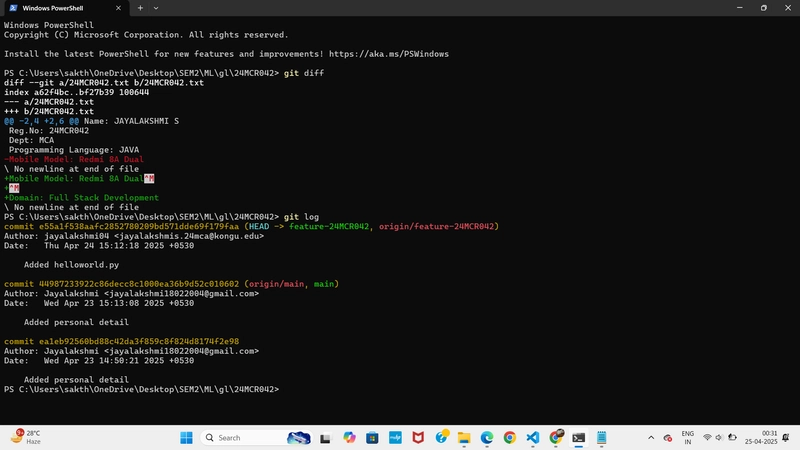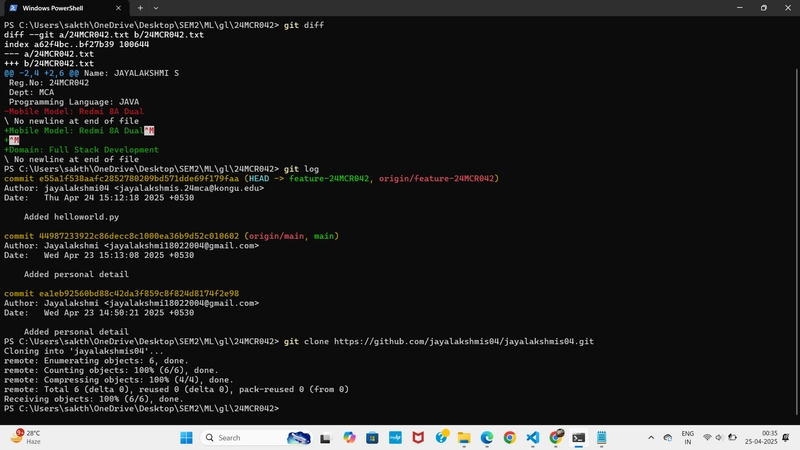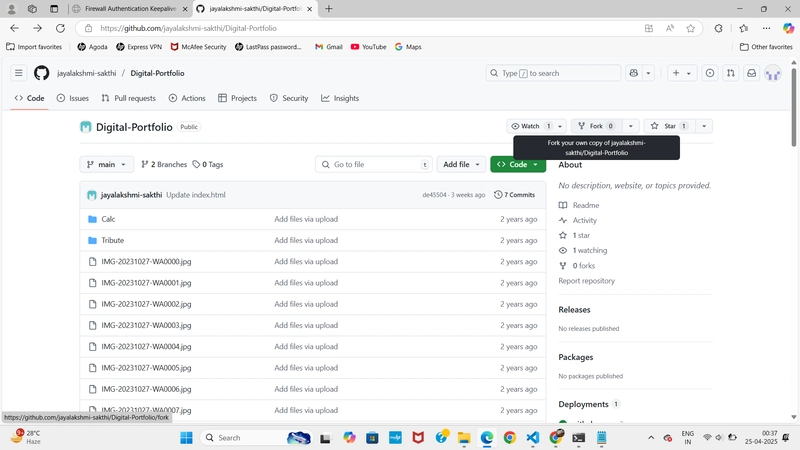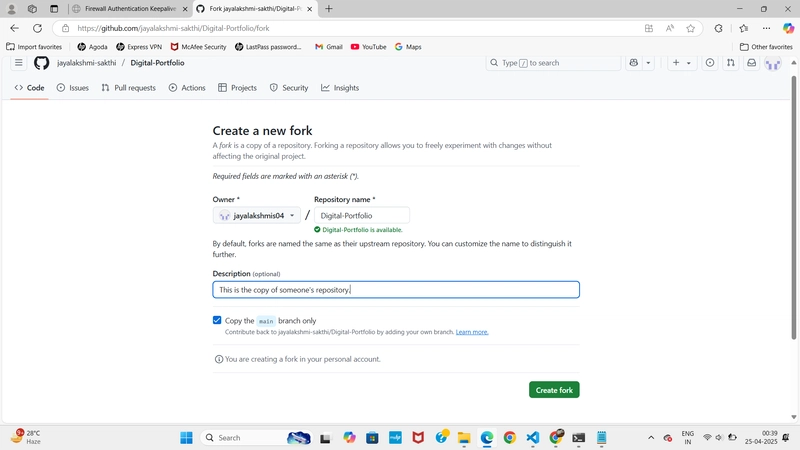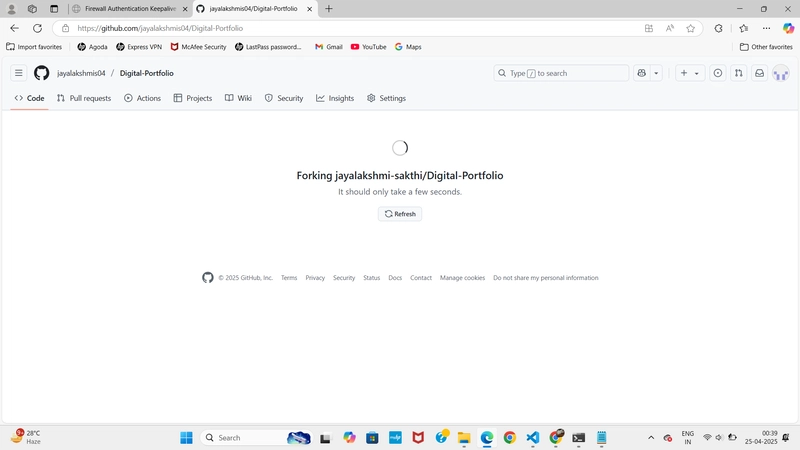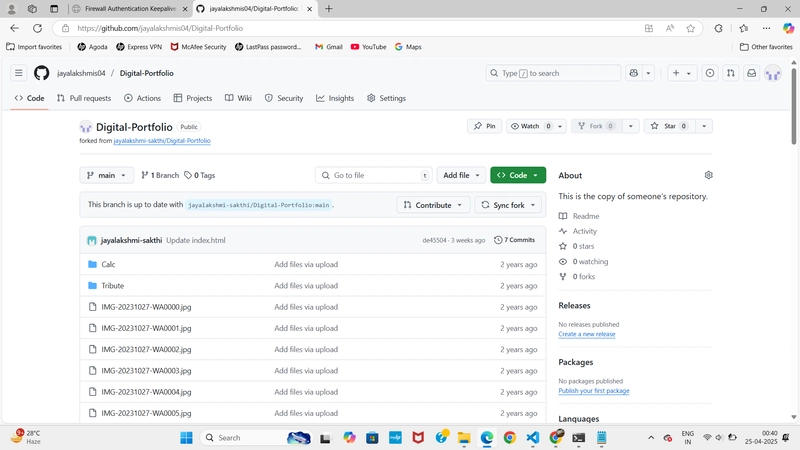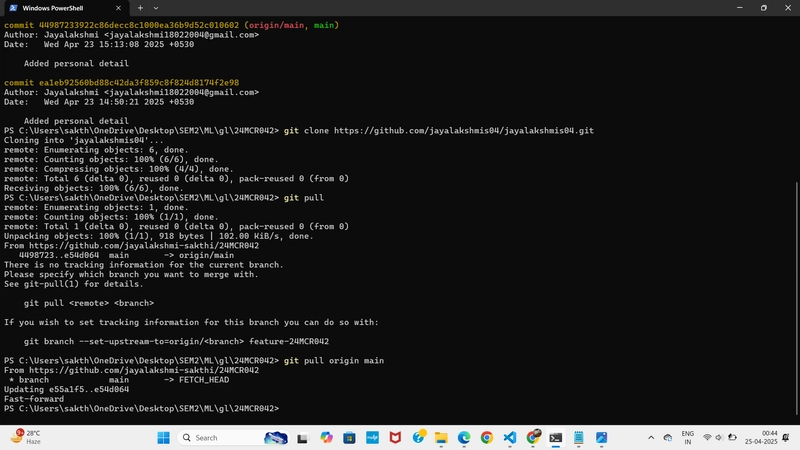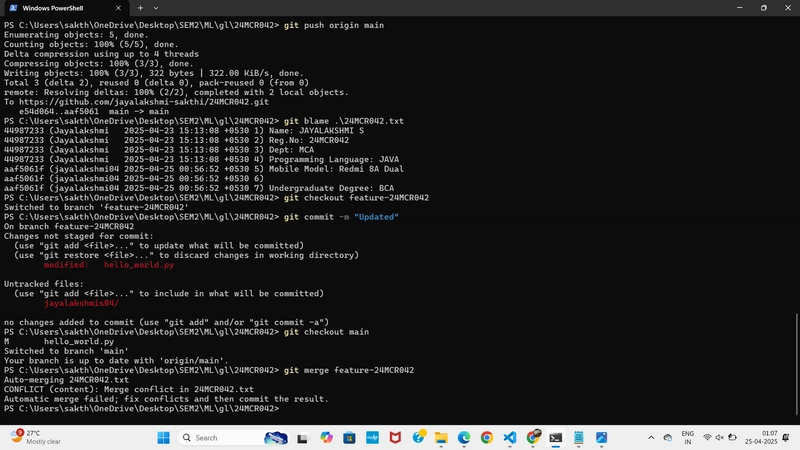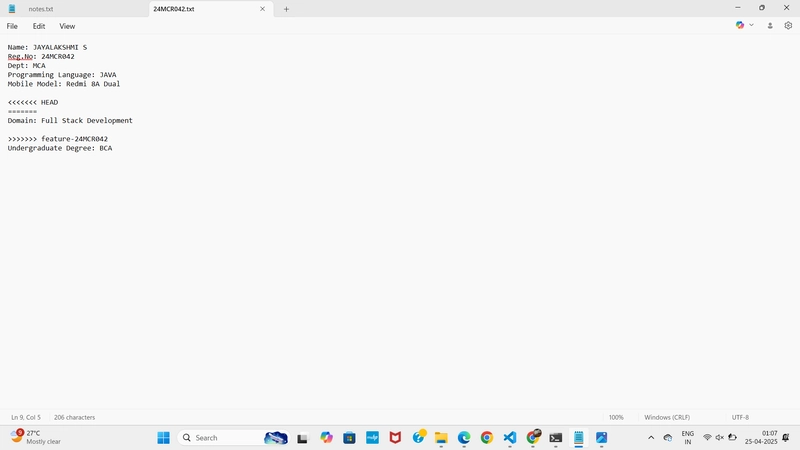USEFUL GIT COMMANDS
✅1. git diff Description: Shows the differences between files in your working directory and the index (staging area). Command: git diff Screenshot: ✅2. git log Description: Displays the commit history of the current branch with details such as commit ID, author, and date. Command: git log Screenshot: ✅3. git clone Description: Clones an existing remote Git repository into a local directory. git clone https://github.com/username/repository.git Command: git clone https://github.com/jayalakshmis04/jayalakshmis04.git Screenshot: ✅4. git fork Description: Creates a personal copy of someone else's repository into your GitHub account. Note: This is done from the GitHub interface, not the command line. Command: No terminal command; click "Fork" on the top right of a GitHub repository. Screenshot: ✅5. git pull Description: Fetches and integrates changes from the remote repository into the current branch. Command: git pull origin main Screenshot: ✅6. git push Description: Sends committed changes to a remote repository like GitHub. Command: git push origin main Screenshot: ✅7. git blame Description: Shows who last modified each line of a file and when. Command: git blame filename Screenshot: ✅8. git merge conflict Description: Occurs when changes from different branches conflict during a merge. Command to simulate: Make conflicting changes in two branches git merge feature-branch Screenshot: Conflicted File: ✅9. git branch Description: Lists existing branches or creates a new one. Command: git branch To create a new branch git branch new-branch Screenshot: ✅10. git ignore Description: Used to exclude files and directories from version control by specifying them in a .gitignore file. Command: Create or edit .gitignore file and add the filenames or patterns to exclude. Example: node_modules/ *.log .env Screenshot:
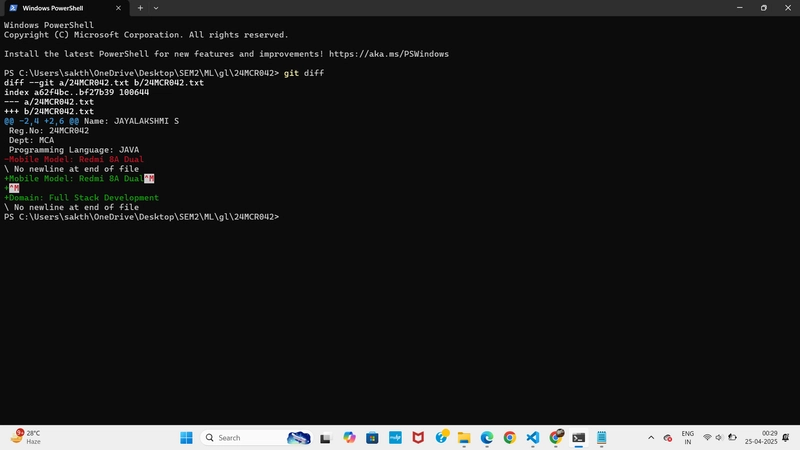
✅1. git diff
Description:
Shows the differences between files in your working directory and the index (staging area).
Command:
git diff
✅2. git log
Description:
Displays the commit history of the current branch with details such as commit ID, author, and date.
Command:
git log
✅3. git clone
Description:
Clones an existing remote Git repository into a local directory.
git clone https://github.com/username/repository.git
Command:
git clone https://github.com/jayalakshmis04/jayalakshmis04.git
Screenshot:
✅4. git fork
Description:
Creates a personal copy of someone else's repository into your GitHub account.
Note: This is done from the GitHub interface, not the command line.
Command:
No terminal command; click "Fork" on the top right of a GitHub repository.
Screenshot:
✅5. git pull
Description:
Fetches and integrates changes from the remote repository into the current branch.
Command:
git pull origin main
Screenshot:
✅6. git push
Description:
Sends committed changes to a remote repository like GitHub.
Command:
git push origin main
Screenshot:
✅7. git blame
Description:
Shows who last modified each line of a file and when.
Command:
git blame filename
✅8. git merge conflict
Description:
Occurs when changes from different branches conflict during a merge.
Command to simulate:
Make conflicting changes in two branches
git merge feature-branch
Screenshot:
✅9. git branch
Description:
Lists existing branches or creates a new one.
Command:
git branch
To create a new branch
git branch new-branch
✅10. git ignore
Description:
Used to exclude files and directories from version control by specifying them in a .gitignore file.
Command:
Create or edit .gitignore file and add the filenames or patterns to exclude.
Example:
node_modules/
*.log
.env





















































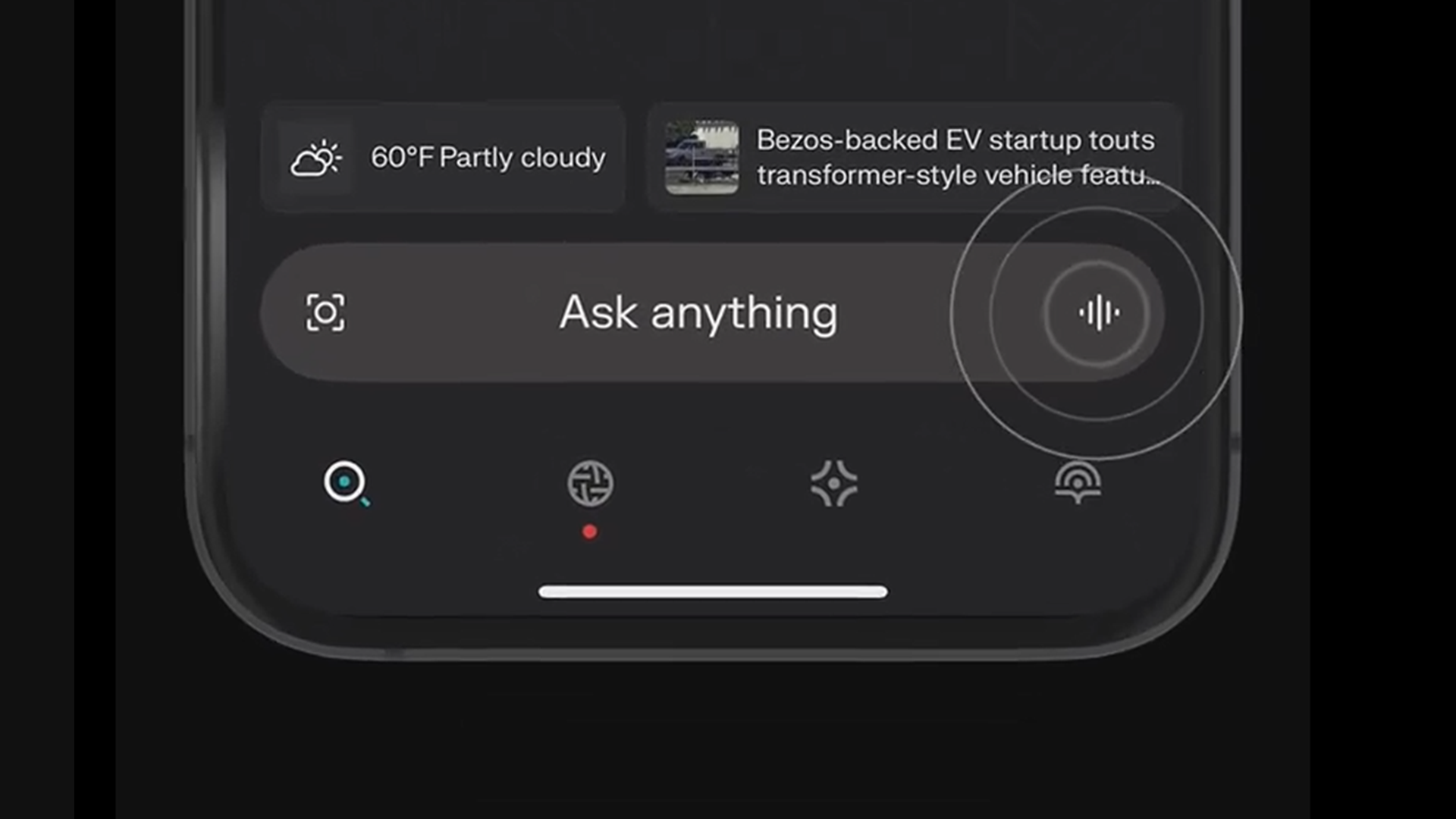
















![Apple to Shift Robotics Unit From AI Division to Hardware Engineering [Report]](https://www.iclarified.com/images/news/97128/97128/97128-640.jpg)
![Apple Shares New Ad for iPhone 16: 'Trust Issues' [Video]](https://www.iclarified.com/images/news/97125/97125/97125-640.jpg)
































































































































































































![[The AI Show Episode 144]: ChatGPT’s New Memory, Shopify CEO’s Leaked “AI First” Memo, Google Cloud Next Releases, o3 and o4-mini Coming Soon & Llama 4’s Rocky Launch](https://www.marketingaiinstitute.com/hubfs/ep%20144%20cover.png)






























































































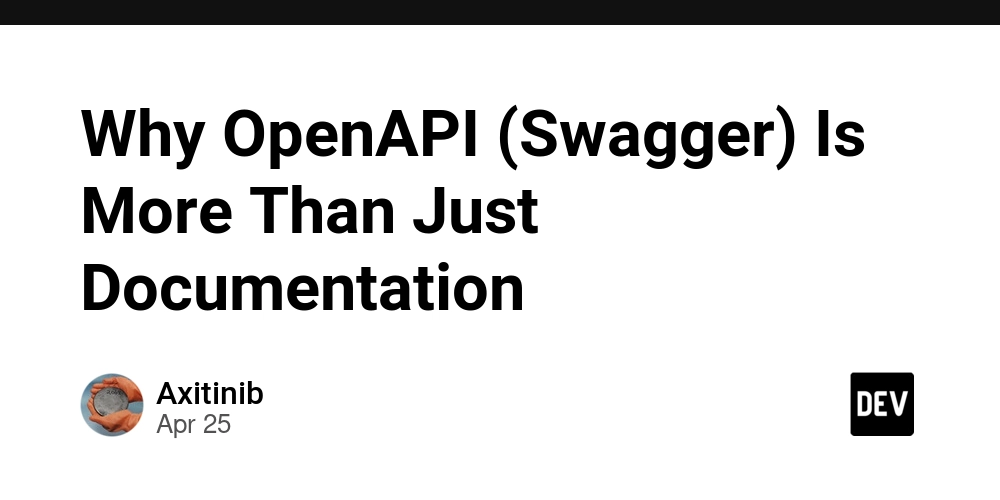


















































































.jpg?#)





















































